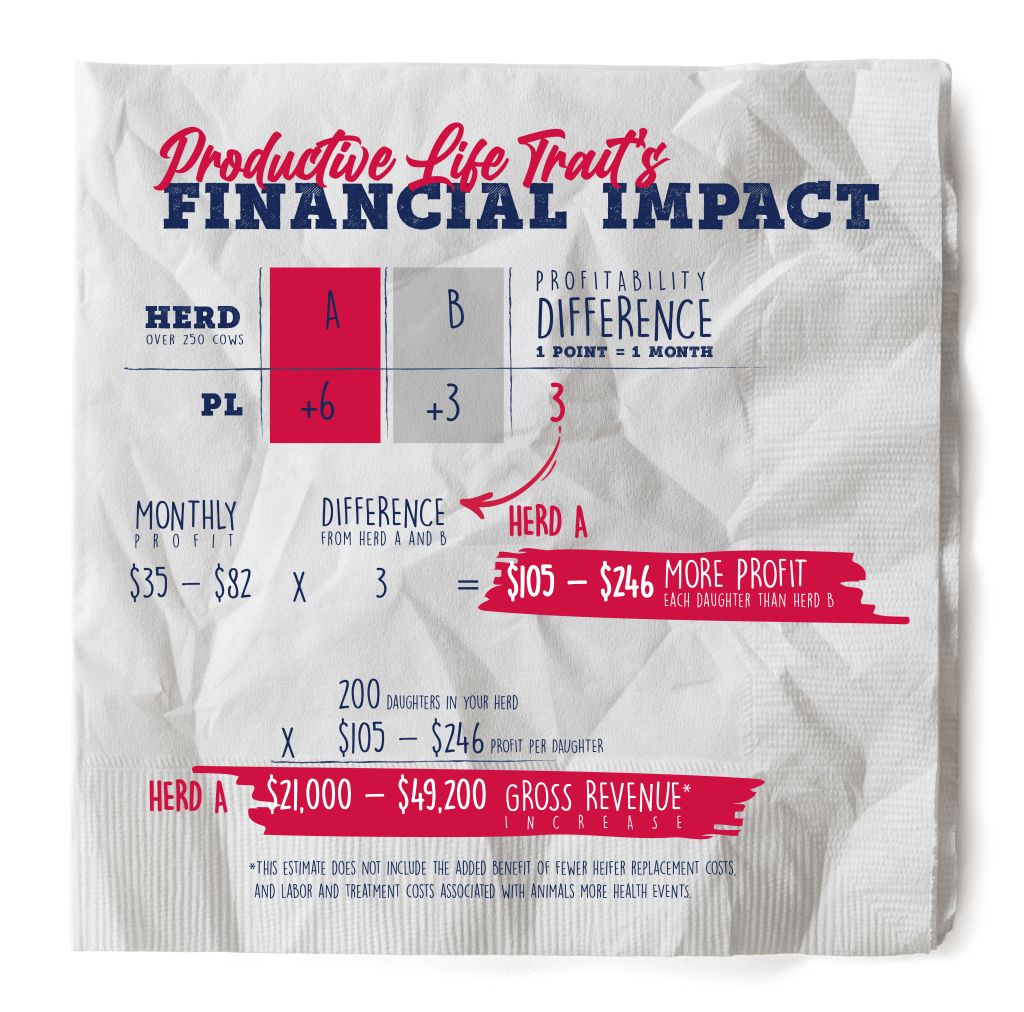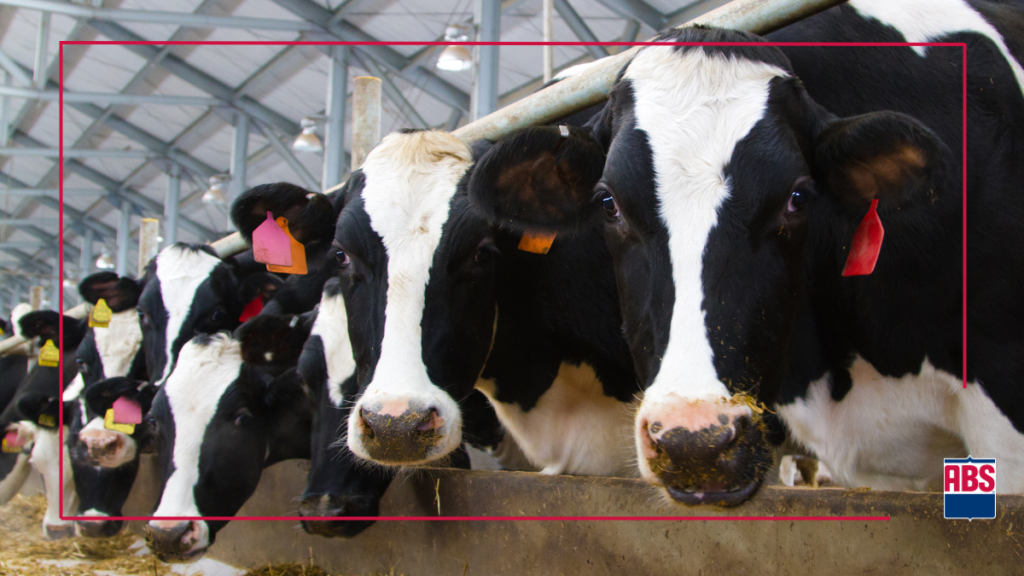Publish date: 10.7.24
Understanding each trait on a bull proof or genomic evaluation, including its definition and the possible financial implications for your operation when selecting for it, is crucial. In some cases, a small change of one point—whether an increase or decrease—may have minimal effects, while in other situations, the consequences can be much more significant.
Remember, traits are measured as predicted transmitting abilities (PTAs) relative to the breed population average, known as the base. This base undergoes a recalibration process every five years to update the averages. The last base change occurred in 2020, making the current PTA base applicable to cows born in 2015. The next base change is set for 2025. It’s important to keep these adjustments in mind, as they ensure the continued accuracy and relevance of genetic evaluations as new data and breeding advancements are introduced.
In today’s blog on quantifying traits, we will focus on other health traits. You will discover how these traits can positively or negatively affect the financial aspects of your herd’s health.
Making Sense of the Dollars and Cents: Traits to Create a Healthy and Profitable Herd for the Long Haul by Considering These Health Traits
Productive Life (PL) is the health trait that measures the time in months the daughters are predicted to be a profitable contributor to your herd when compared to the average population of the breed. This metric helps dairies select for genetics that are likely to have longer, more productive, and profitable lifespans.
A single point increase in Productive Life represents an additional month that a cow’s daughters are expected to stay productive in the milking herd compared to the average of the breed.
You may wonder, what is the impact of adding a few months? Like many things in business, even a seemingly small difference can significantly impact overall herd profitability. The following example will hopefully help you understand its importance.
Let’s say you are comparing two bull groups as potential sires of your future herd. Sire Group A has an average PL of +6 and Sire Group B has an average PL prediction of +3. Daughter of Sire Group A is predicted to remain a profitable member of your herd on average 3 months longer than daughters of Sire Group B.

In 2023, for herds milking over 250 cows the profit per cow per month ranged from $35 and $82 depending on region and varying herd size. The expectation is that each daughter for Sire Group A will generate an estimated $105- $246 more profit. If that sire group produces two hundred daughters, then the value multiplies to $21,000- $49,200 adding profits from the genetics with expected better longevity. This estimate does not include the added benefit of fewer heifer replacement costs, and labor and treatment costs associated with animals more health events.
Other traits that target health traits are:
- Cow Livability refers to the genetic predisposition of a cow to avoid dying while on farm. It is expressed as a percentage difference from the breed average.
- Somatic Cell Count indicates genetic susceptibility for udder health by tracking the indicator of somatic cell count. Animals with SCS <3.0 are predicted to have better udder health compared to the breed average while animals with SCS >3.0 are expected to have daughters with cell counts higher than the breed average.
Health Trait Selection Made Easy
ABS developed a tool for Holstein producers to use to simplify selection for health in their genetic plan. The ABS Health Index (AHI) combines eight related health traits or events into a single simple metric based on overall impact. AHI evaluates:
- Mastitis
- Metritis
- Heifer Survival
- Ketosis
- Retained Placenta
- Twinning Rate
- Displaced Abomasum
- Milk Fever (Hypocalcemia)
When looking at AHI trait values on Bull Search, 100 presents the breed average. If the value is greater than 100, then the daughters of that bull are estimated to have less health incidence listed above. Unlike other health and wellness indexes, we give you the flexibility through a Custom Index to control the amount of emphasis you desire for health traits in your genetic plan.
The Ideal Custom Index Is Balanced
Selecting based solely on individual traits can be overwhelming due to the variety of traits, their meanings, and the differing implications of higher or positive values. That’s why we recommend developing a balanced Custom Index to simplify your genetic selection into a single number tailored for your specific dairy operation.
A Custom Index should balance all three key areas: production traits, health and fitness traits, and conformation traits. The advantage of a Custom Index is that you have the flexibility to prioritize the traits that matter most to your dairy and assign them appropriate weight. Creating a balanced Custom Index is essential to ensure you don’t focus too heavily on one area and hinder progress in another.
There’s no need to be intimidated, though. The process of developing your Custom Index can be straightforward. As your genetic advisor, ABS is here to help you create a Custom Index that fits your needs by formulating a breeding plan tailored to your specific dairy operation.
Are you interested in enhancing your genetic improvement or developing your own Custom Index? Fill out the form below or reach out to your ABS Genetic Advisor.






